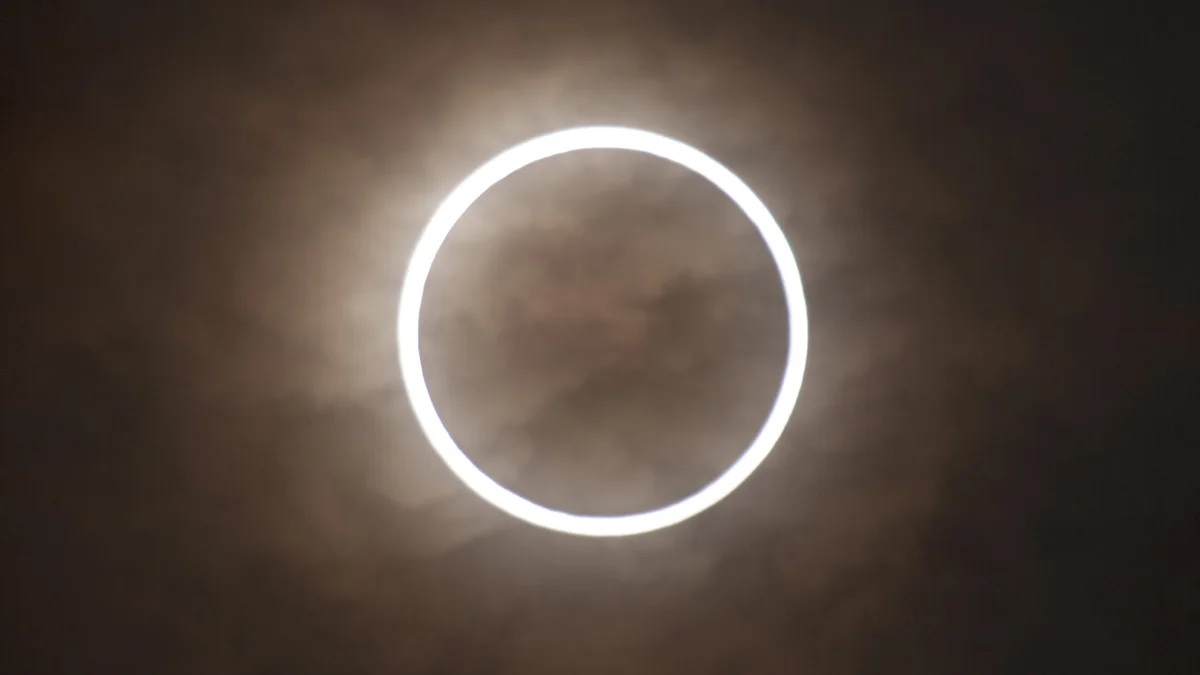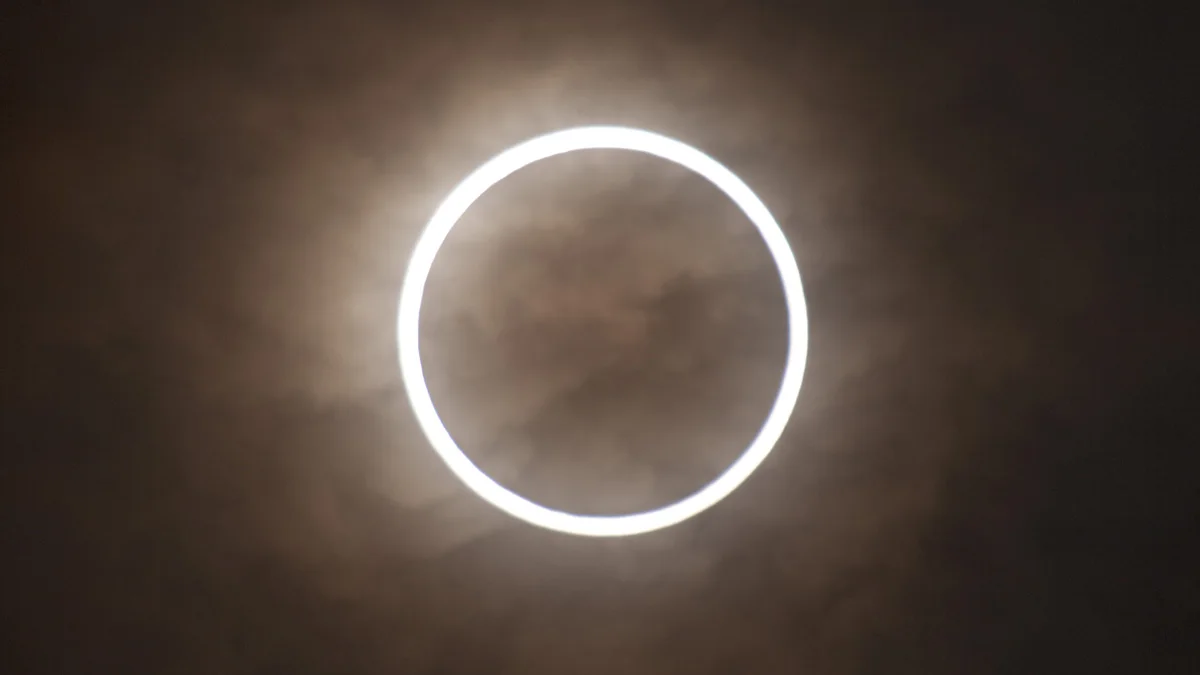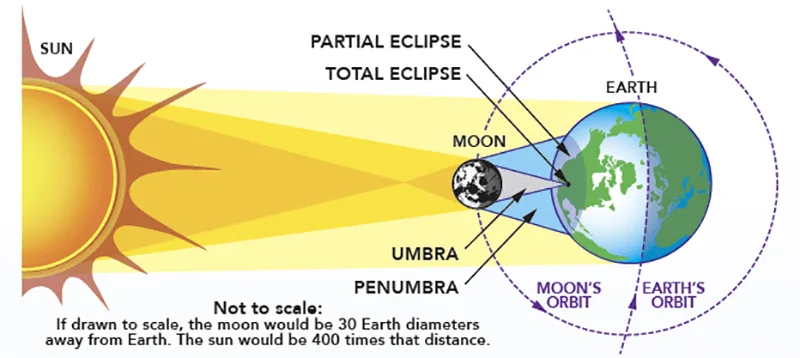
How to watch the Christmas 'Ring of Fire' solar eclipse from anywhere
It may be happening on the other side of the world from us, but we can still watch this amazing event in realtime!
One of the best astronomical events for Winter 2020 is happening this week, and it's one that you won't want to miss!
On Christmas Day eve, the night of December 25-26, 2019, the New Moon will be passing directly between the Earth and the Sun, to produce a solar eclipse.
If seeing "the night of" and "solar eclipse" in the same sentence seems a bit odd, it's not your imagination, and there's no error there. From our perspective here in North America, this solar eclipse will be occurring in the middle of the night! It starts at around 9:30 p.m. EST on the 25th, reaches its peak at 12:17 a.m. EST and ends at 3:05 a.m. EST, on the 26th.
On the other side of the planet from us, however, from northeast Africa to southeast Asia, people will be able to look up (using the proper eye protection, of course) to watch as the Moon slowly covers up most of the Sun.

The path of the annular solar eclipse on December 25-26, 2019. Credit: NASA/Fred Espenak/Scott Sutherland
WATCH IT FROM ANYWHERE
Just because those of us on this side of the planet can't see this event directly doesn't mean we can't still watch it, as it's happening.
Slooh will be presenting a live stream of the event, starting at 10 p.m. EST on December 25.
The peak of the eclipse - when the Moon will be covering up as much of the Sun as it can for this event - will happen beginning around 15 minutes after midnight on December 26. It will last for roughly 3 minutes (up to 3 minutes and 39 seconds at the point of maximum eclipse, which is close to Kuala Lumpur, Malaysia).
A RING OF FIRE
Unlike the August 2017 Great American Solar Eclipse, where the Moon completely blocked the Sun in a total solar eclipse, this Christmas eclipse is a special one known as an annular, or 'ring of fire' solar eclipse.
The reason for this is because, at the peak of the eclipse, the Moon won't completely cover up the Sun. Instead, the Moon will block out the middle of the Sun's disk, leaving a thin ring of light around its edges.

The annular solar eclipse of May 12, 2012, captured by Wikimedia Commons user Nakae from Tokyo, Japan. (CC BY 2.0)
This happens due to the apparent sizes of the Moon and the Sun, which are related to their distance from us. While the sizes and distances of the Sun and the Moon work out perfectly to make eclipses (the Sun is around 400 times larger than the Moon, and 400 times farther away than the Moon), the distances aren't constant. So, what type of eclipse we see - total or annular - depends on the eclipse timing and the exact distances (and thus apparent sizes) at that time.

This diagram from the 2017 total solar eclipse shows the geometry of the Sun, Moon and Earth during an eclipse. Note that it is not to scale, and this week's eclipse is happening on the opposite side of the planet from North America. Credit: NASA
In general, total solar eclipses occur when the Moon is closer than around 372,000 kilometres from Earth, which is roughly 12,000 km closer to Earth than its average distance. Annular eclipses occur when the Moon is farther away. That changes slightly depending on the time of year, as the Sun's apparent size is larger during northern winter (near the January 4 perihelion) than it is during northern summer (near the July 4 aphelion). Still, with the maximum distance for a total eclipse being closer than the Moon's average distance, that means that annular eclipses are a little bit more common than total eclipses.
Just in the past decade, there have been 14 solar eclipses that have either been total, annular or both (there were also ten partial solar eclipses). Of those 14, seven were annular, and six were total. The remaining one, on November 3, 2013, was a rare 'hybrid' eclipse, where the Moon's and Sun's apparent sizes were so close that even as the eclipse was reaching its peak, it changed from being an annular eclipse to a total eclipse before it ended.
IS IT SAFE TO WATCH?
For anyone watching online, it will be perfectly safe to watch this eclipse, without needing any eye protection. All live streams of the event will be using cameras that have the proper solar filters.
For anyone watching it from Africa, Asia or Australia, there is no part of the eclipse that will be safe to watch without eye protection. While there is a brief safe period during a total solar eclipse, when the Moon completely blocks the Sun, during an annular eclipse, even the thin ring of the Sun around the Moon is still bright enough to cause eye damage.
Everyone watching should at least wear Mylar eclipse glasses. Sunglasses will not protect, no matter how many you use, and even welders glass isn't recommended as there are only specific kinds that block out enough light for safe viewing. Any equipment used to capture the event should have an appropriate solar filter, as well.
So, tune in above to watch this event online, or check in on Twitter using the hashtag #annularsolareclipse, and to see what else we can see in the sky this season, check out our guide to Winter Astronomy 2020.
Sources: NASA | Slooh | With files from The Weather Network
